Commercial Construction Calgary

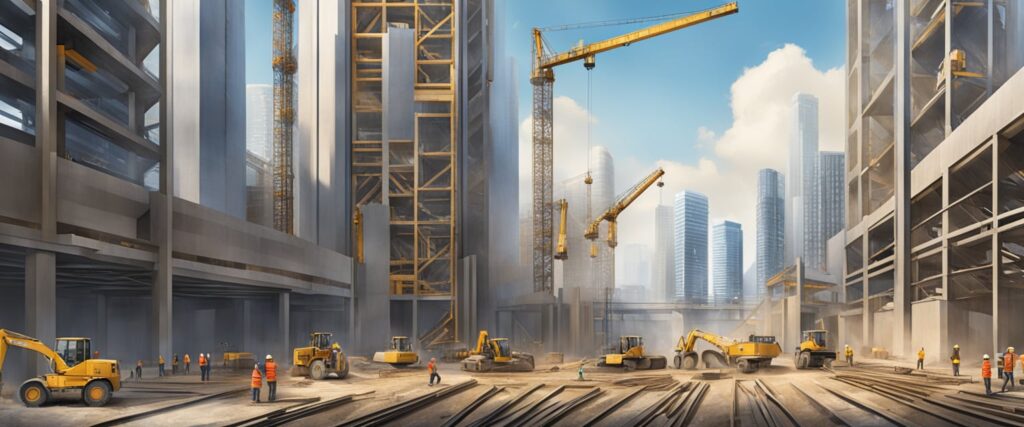
Key Trends and Opportunities for Growth
Calgary’s commercial construction market is thriving, driven by a strong economy and a growing demand for innovative building solutions. The city’s landscape is shaped by diverse projects ranging from retail spaces to industrial complexes, making it a hub for both local and western Canadian construction. With advancements in technology and a focus on sustainability, the commercial construction sector is evolving rapidly to meet the needs of businesses and clients alike.
As organizations seek to optimize their operations, understanding the intricacies of commercial construction becomes essential for success. Effective project management and adherence to safety standards play crucial roles in achieving timely and budget-friendly outcomes. Clients are increasingly prioritizing collaboration with professionals who can ensure their vision is executed with precision and care, highlighting the importance of clear communication throughout the construction process.
Overall, Calgary presents a unique blend of challenges and opportunities in the commercial construction realm. From innovative design solutions to the implementation of green practices, the future of construction in this vibrant city is promising and full of potential for growth.
Key Takeaways
- Calgary’s commercial construction sector is diverse and growing rapidly.
- Collaboration with professionals ensures project success and client satisfaction.
- Sustainability and innovation are key drivers in the future of construction.
Overview of Calgary's Construction Landscape
Calgary’s construction landscape is characterized by notable growth and innovation, driven by various commercial projects. The city’s dynamic industry is influenced by economic trends and the demand for modern spaces that cater to evolving needs.

Growth and Development Trends
In recent years, Calgary has witnessed significant growth in its construction sector. The city is experiencing a surge in commercial projects, which reflect the evolving needs of businesses and the community. According to reports, urbanization and population growth are primary factors driving this expansion.
As industries diversify, there is increased demand for infrastructure and services. New office spaces, retail developments, and mixed-use buildings are being developed to accommodate this growth. Investors are focusing on sustainable and innovative design practices, enhancing the urban landscape.
Recent projects have showcased advanced building technologies, improving efficiency and reducing environmental impact. The pursuit of LEED certification is becoming standard, positioning Calgary as a leader in sustainable construction.
Role of Commercial Construction
Commercial construction plays a crucial role in Calgary’s economic landscape. It contributes not only to job creation but also to the attractiveness of the city for businesses and investors. Various sectors, including retail, healthcare, and technology, have prompted the development of specialized facilities that enhance operational efficiency.
Developers are increasingly opting for mixed-use spaces that combine residential, office, and retail components to foster a vibrant community. This approach maximizes land use and addresses the growing demand for integrated lifestyle options.
Moreover, innovative construction techniques are streamlining project timelines and costs. The implementation of advanced project management tools is essential for keeping commercial projects on track. This focus on innovation ensures that Calgary remains competitive in the broader construction industry.
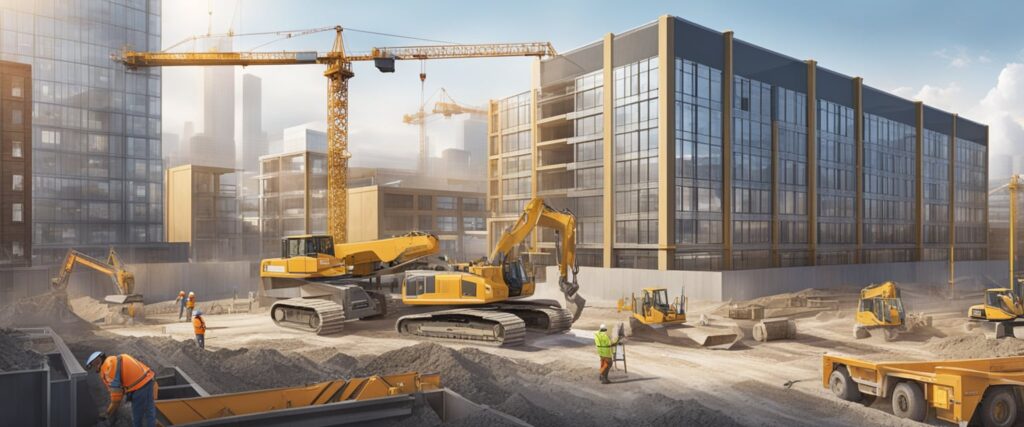
Planning and Design
Effective planning and design are critical to the success of commercial construction projects in Calgary. Attention to detail in these phases can lead to improved efficiency, reduced costs, and enhanced aesthetic appeal.
Importance of Effective Project Planning
Effective project planning sets the foundation for a successful construction endeavor. It involves defining clear objectives, timelines, and budgets. A well-thought-out project plan outlines all phases, ensuring that resources are allocated efficiently.
Collaboration among stakeholders, including architects and contractors, is vital. Regular meetings and updates help maintain alignment with the project goals. Utilizing modern tools like 3D models allows for better visualization, aiding in quicker decision-making.
Key components of effective project planning include:
- Risk assessment: Identifying potential challenges early.
- Resource allocation: Ensuring necessary materials and labor are available.
- Timeline management: Keeping the project on schedule.
Architectural Design Considerations
Architectural design plays a significant role in the aesthetics and functionality of commercial buildings. Architects must consider various factors, including structural integrity, sustainability, and compliance with local regulations.
Designing with the surrounding environment in mind promotes harmony between the building and its location. Attention should be given to materials that enhance durability while minimizing the ecological footprint.
It’s essential to create spaces that cater to end-users. This includes planning for adequate lighting, accessibility, and efficient flow between areas. Incorporating 3D models reinforces these concepts, allowing for adjustments before construction begins.
Important architectural considerations include:
- Zoning regulations: Understanding local building codes.
- Sustainable practices: Utilizing energy-efficient materials.
- User experience: Focusing on functionality and comfort.
Commercial Construction Services
Commercial construction services encompass a range of specialized offerings tailored to meet the diverse needs of businesses. The focus lies on two primary service categories: general contracting and design-build services. Each plays a crucial role in delivering successful construction outcomes.
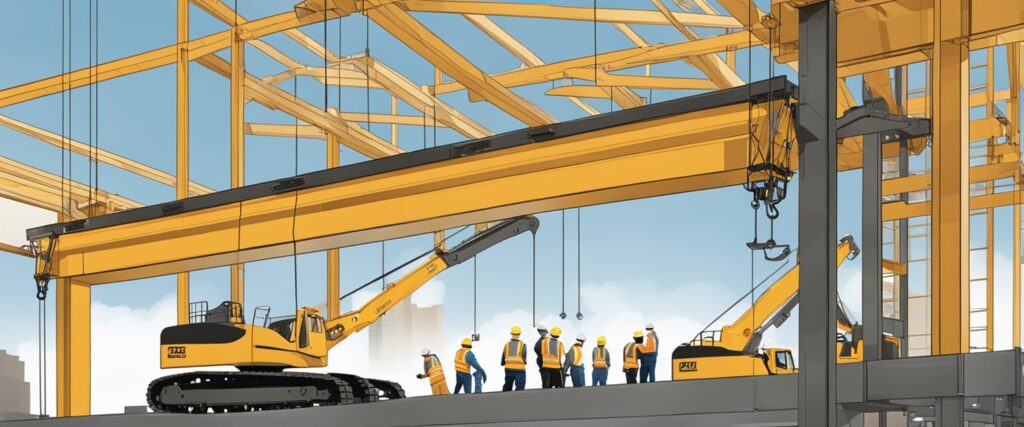
General Contracting
General contracting is a pivotal aspect of commercial construction. It involves the oversight and management of a construction project from inception to completion. A general contractor coordinates various subcontractors and ensures that work aligns with the project specifications.
Key responsibilities include:
- Budget Management: Ensuring financial control throughout the project.
- Schedule Adherence: Maintaining timelines to prevent delays.
- Quality Assurance: Implementing standards to meet client expectations.
Selecting a reliable general contractor can significantly impact the project’s success, streamlining processes and enhancing communication among all parties involved.
Design-Build Services
Design-build services streamline the construction process by integrating the design and construction phases into one cohesive service. This approach fosters collaboration between architects and builders, which leads to improved efficiency and innovation.
Benefits of design-build include:
- Single Point of Responsibility: Simplifies communication and accountability.
- Cost Control: Allows for better budget management from the outset.
- Faster Delivery: Reduces project timelines by overlapping design and construction phases.
This model is particularly advantageous for complex projects, as it facilitates problem-solving and minimizes disputes between design and construction teams.

Technology and Innovation in Construction
Technological advancements are reshaping the construction landscape in Calgary. Innovations in tools and techniques increase productivity and enhance project efficiency, allowing companies to tackle complex challenges with ease.
The Impact of Technology on Productivity
Technology plays a pivotal role in enhancing productivity in the construction industry. For instance, Building Information Modeling (BIM) allows for better planning and visualization, leading to fewer onsite errors.
There are several other tools that contribute to productivity growth:
- Drones improve site surveying and monitoring, providing real-time data without extensive manual labor.
- Prefabrication streamlines processes by manufacturing components off-site, reducing construction time and improving quality control.
- Wearable technology, such as smart helmets, enhances worker safety and ensures compliance with regulations.
Each of these advancements directly impacts project timelines and budgets.
Innovations Shaping the Construction Process
Innovations in construction processes are crucial for adapting to market demands. Emerging technologies such as 3D printing are revolutionizing material usage by creating components directly at the construction site, minimizing waste and transportation costs.
Additionally, green building technologies promote sustainable practices, reducing energy consumption and environmental impact. Techniques like modular construction enable faster assembly and greater design flexibility.
Investments in research by institutions, reflect a commitment to advancing these innovations. Such initiatives lead to the development of advanced materials, thereby enhancing overall construction efficiency and sustainability.
Project Management Strategies
Effective project management strategies are crucial in commercial construction to ensure projects stay on track and meet client expectations. Key elements include team coordination and detailed planning of timelines and milestones.
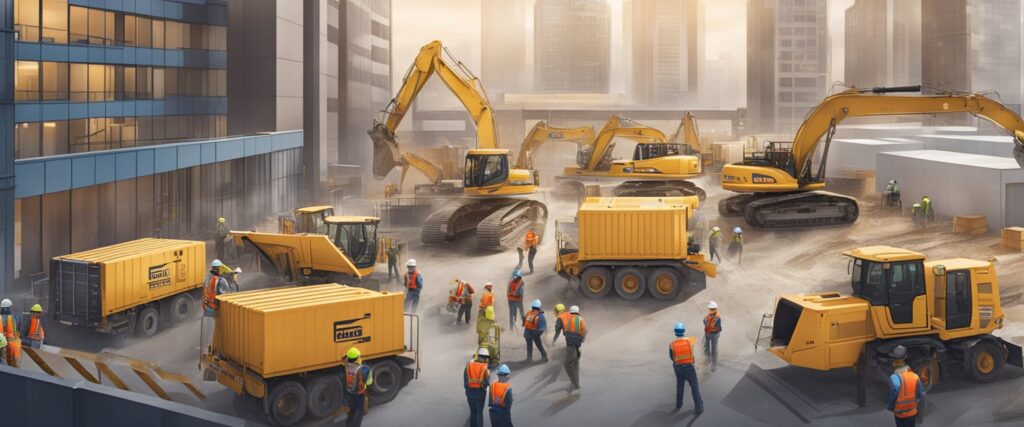
Team Coordination and Collaboration
Successful commercial construction projects rely on strong team coordination and collaboration. Clear communication among all stakeholders—such as architects, engineers, and contractors—is essential.
Regular meetings help to align objectives and address potential issues early. Utilizing project management software allows for real-time updates and document sharing, which enhances transparency.
Moreover, fostering a collaborative environment encourages team members to share insights and expertise. Implementing defined roles and responsibilities can also minimize overlaps and ensure that tasks are completed efficiently. This structured collaboration helps mitigate risks, as any uncertainties are addressed promptly.
Timeline and Milestone Planning
Timeline and milestone planning are vital components of project management in commercial construction. Establishing a detailed timeline lays the groundwork for tracking progress and managing resources efficiently.
Key milestones should identify critical phases of the project, including permit approvals, foundation work, and final inspections. Assigning realistic timeframes to these milestones allows for better anticipation of potential delays.
Additionally, incorporating buffer times within the schedule can accommodate unforeseen challenges. This proactive approach reduces the likelihood of significant disruptions. Regularly reviewing timelines and milestones helps keep the project on track, making it easier to adjust plans when necessary. This adaptation can ultimately lead to successful project completion.
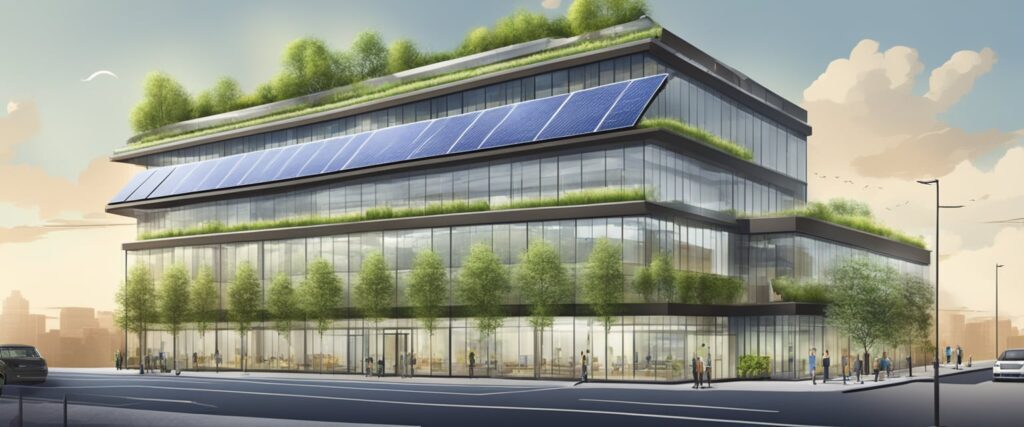
Sustainability and Green Construction
Sustainable construction practices are increasingly vital in the commercial construction sector. These practices not only minimize environmental impact but also enhance building performance and occupant well-being.
Sustainable Materials and Building Techniques
Using sustainable materials is crucial in green construction. These materials often include recycled content, sustainably harvested wood, and low-emission alternatives.
- Examples of Sustainable Materials:
- Recycled steel
- Bamboo
- Low-VOC paints
Innovative building techniques, such as modular construction and efficient insulation, further reduce energy consumption. Techniques like rainwater harvesting and passive solar design also contribute to sustainability.
By implementing these materials and techniques, builders can significantly decrease the carbon footprint of their projects while creating healthier living and working environments.
Benefits of Green Construction
The advantages of green construction are multifaceted. Financially, it can lead to lower operational costs due to energy efficiency.
- Key Benefits:
- Reduced utility bills
- Increased property value
- Enhanced occupant satisfaction
Environmental benefits include the conservation of resources and improved air quality. Green buildings often qualify for various certifications, such as LEED, which can enhance marketability.
Additionally, communities benefit from sustainable construction through reduced pollution and better resource management. This progress aligns with urban goals to create a more sustainable future.
Understanding Client Needs
Client needs in commercial construction encompass various critical aspects. Understanding these needs is essential for fostering trust and delivering projects that align with clients’ financial expectations and timelines.
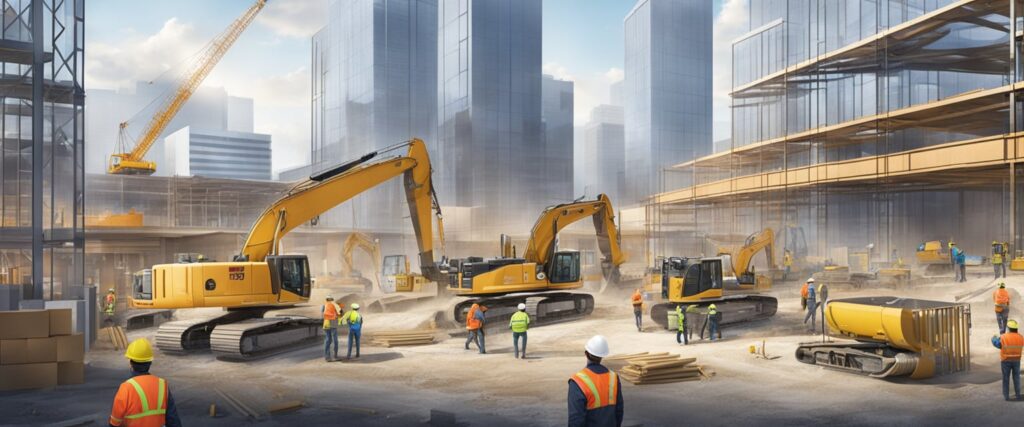
Aligning with Budget and Expectations
Clients often face tight budgets and specific expectations regarding project outcomes. A clear and detailed understanding of these financial parameters enables contractors to propose feasible options that do not compromise quality.
Open communication about costs helps in establishing a realistic budget. Clients appreciate transparency about potential extra expenses that may arise during construction.
Key factors to address include:
- Detailed Estimates: Break down the costs associated with labor, materials, and potential delays.
- Contingency Planning: Discuss reserves for unforeseen expenses to avoid surprises.
By aligning project plans with clients’ budgets and expectations, contractors can build trust and credibility.
Building Long-Term Client Relationships
Establishing strong client relationships is foundational in commercial construction. Trust emerges through consistent communication and delivering on promises.
Contractors can enhance relationships by:
- Regular Updates: Keep clients informed about project progress or any challenges.
- Post-Project Support: Offering maintenance or follow-up services after project completion fosters goodwill.
A genuine commitment to understanding client needs cultivates loyalty. Clients are more likely to return to a contractor who acknowledges their priorities and facilitates open discussions. This proactive approach strengthens partnerships and encourages future collaboration.
Safety and Compliance
Ensuring safety and compliance in commercial construction is critical for protecting workers and meeting legal requirements. This involves implementing comprehensive safety measures and adhering to strict regulations established in the construction industry.
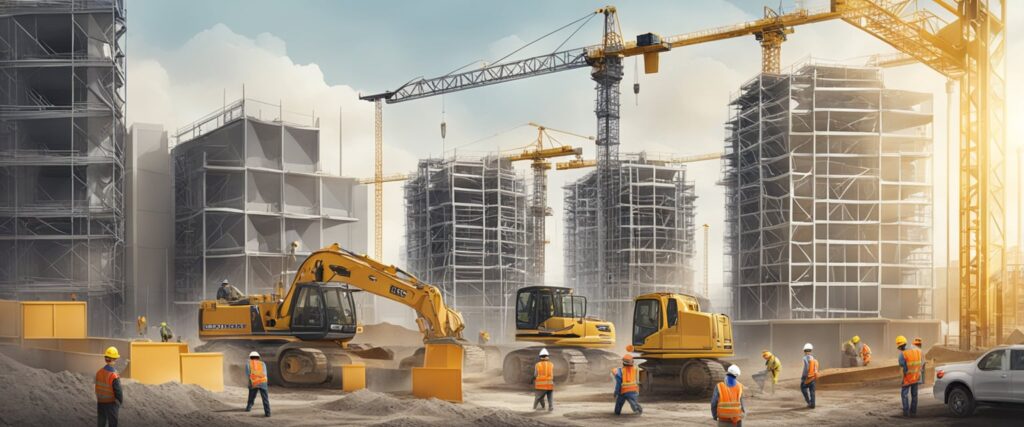
Workplace Safety Measures
Workplace safety measures are essential for reducing risks on construction sites. Companies should implement a robust safety management system that includes:
- Training Programs: Regular safety training for all employees helps them recognize hazards.
- Personal Protective Equipment (PPE): Ensuring workers use appropriate gear like helmets, gloves, and high-visibility clothing can prevent injuries.
- Safety Protocols: Establishing clear protocols for machinery operation and hazardous material handling increases workplace safety.
Regular safety audits can identify potential hazards. Creating a culture of safety encourages workers to report unsafe conditions without fear of reprisal.
Regulatory Compliance and Best Practices
Regulatory compliance ensures that construction companies follow local, provincial, and federal regulations. Key regulations in Calgary include guidelines set forth by:
- Occupational Health and Safety (OHS): Establishes standards for worker safety.
- Municipal Building Codes: Covers structural integrity and safety during construction.
Best practices include staying updated with regulatory changes and conducting regular compliance checks. Documentation of safety training and incident reports is vital for accountability. Companies that prioritize compliance not only protect their workforce but also enhance their reputation within the industry.
Types of Commercial Construction Projects
Commercial construction covers a diverse range of projects, each tailored to meet specific needs. This section explores several primary types, detailing their unique characteristics and considerations.
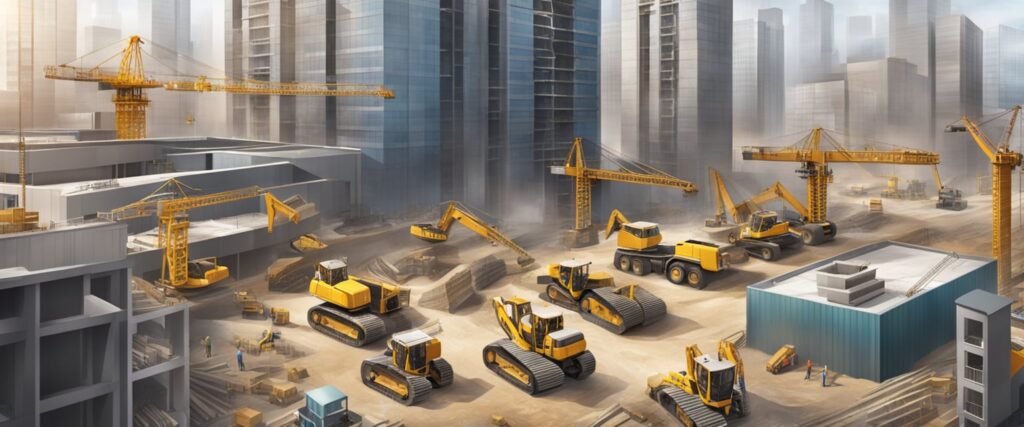
Office Buildings and Spaces
Office buildings serve as essential facilities for businesses, accommodating various corporate activities. These structures can vary from single-tenant buildings to expansive corporate campuses.
Key considerations include layout efficiency, natural lighting, and the potential for future technological upgrades. The design often emphasizes flexibility, allowing for different workspace configurations, from open-plan areas to private offices.
Sustainability is becoming increasingly important, with many projects integrating eco-friendly features and materials to reduce the environmental impact. A well-planned office space not only enhances employee productivity but also contributes to the overall brand image of the organization.
Retail Centers and Hospitality Facilities
Retail centers, including malls and shopping plazas, are designed to attract consumers and facilitate a vibrant shopping experience. These projects require strategic planning to ensure optimal foot traffic and accessibility.
Incorporating features like outdoor spaces, common areas, and ample parking can significantly enhance consumer appeal. Hospitality facilities, including hotels and resorts, prioritize guest experience and comfort.
Key design components for hospitality include room layout, amenities, and aesthetic appeal. Both retail and hospitality projects must focus on branding and engage customers through innovative design and effective marketing strategies.
Industrial Developments and Manufacturing Sites
Industrial construction focuses on facilities such as warehouses, distribution centers, and manufacturing plants. These projects require careful planning to optimize logistics and operational efficiency.
Site selection is crucial, often determined by proximity to transportation networks and labor markets. Many industrial facilities now incorporate modular designs to allow for scalability and adaptability in response to changing market demands.
Health and safety regulations are paramount, guiding decisions on equipment layout and operational workflows. Moreover, integrating green building practices is becoming common as companies strive for sustainability in their manufacturing processes.
The Role of Professionals in Construction
In commercial construction, professionals play critical roles that ensure projects are completed efficiently and meet the required standards. Each group of professionals brings specialized expertise that contributes to the overall success of construction projects.
Engineers and Architects
Engineers and architects are fundamental in the planning and design phases of construction. Architects envision the overall aesthetic and functionality of a building while ensuring compliance with local zoning laws. They create detailed plans that outline every aspect of the project.
Engineers focus on the technical aspects, including structural integrity, mechanical systems, and electrical layouts. Their rigorous analysis helps prevent future issues, ensuring that the construction is safe and sustainable. Additionally, collaboration between engineers and architects fosters inventive solutions to complex design challenges, ultimately saving time and costs.
Contractors and Subcontractors
Contractors manage the day-to-day operations of construction projects. They are responsible for coordinating workers, schedules, and resources to ensure timely completion. A contractor’s experience often determines a project’s success, as they navigate challenges that arise during construction.
Subcontractors specialize in specific areas, such as electrical work, plumbing, or carpentry. Their expertise enables contractors to delegate tasks effectively, ensuring high-quality workmanship. This division of labor fosters efficiency, allowing projects to progress more smoothly and adhere to timelines.
Consultants and Suppliers
Consultants provide invaluable insights that guide decision-making throughout a project. They may offer services in areas such as compliance, cost estimation, and project management. Their knowledge helps mitigate risks and ensures that projects remain on budget and within scope.
Suppliers are another essential component in the construction process. They provide the necessary materials and equipment needed for the project. Establishing strong relationships with reliable suppliers often leads to better pricing and timely availability of materials, which is crucial for maintaining project schedules.
Challenges in Commercial Construction
Commercial construction in Calgary faces several significant hurdles. Key among these are the complexities in managing construction timelines and the impacts of fluctuating market conditions. Each aspect presents unique challenges that require careful navigation.
Managing Construction Timelines
Construction timelines are critical in commercial projects. Delays can lead to increased costs and strained relationships among stakeholders.
Factors contributing to timeline challenges include:
- Supply Chain Issues: Material shortages can halt progress.
- Labor Availability: Skilled labor shortages can slow down hiring and project execution.
- Weather Conditions: Adverse weather can impact construction schedules.
To mitigate risks, project managers often implement proactive scheduling techniques and maintain open communication with all parties involved. This fosters a collaborative environment that can adapt to unforeseen delays.
Navigating Market Fluctuations
Market fluctuations can significantly affect commercial construction. Changes in demand for retail spaces, offices, and other commercial structures can alter project feasibility.
Key considerations include:
- Economic Conditions: A downturn may reduce investment in new projects.
- Competition: An influx of new projects can saturate the market, affecting pricing and timelines.
- Interest Rates: Rising rates can deter financing for new developments.
Staying informed about market trends helps stakeholders make timely adjustments to strategies. Agile management practices and thorough market analysis can enhance resilience against these fluctuations.
Case Studies
Examining significant projects in Calgary’s commercial construction landscape reveals a commitment to innovation and efficiency. These examples highlight the evolving architecture and design techniques that contribute to the city’s skyline.
Notable Calgary Construction Projects
One of the standout projects is the M2 Mixed-Use Building. This building features an eye-catching design along the Bow River, enhancing the East Village’s urban landscape.
The Bow, a crescent-shaped office tower showcases modern architectural techniques. At 236 meters, it stands as one of Calgary’s tallest buildings and serves as a headquarters for energy companies. These projects represent the forefront of architectural advancement in Calgary.
The Future of Construction in Calgary
Calgary’s construction landscape is undergoing significant changes, driven by growth and evolving industry practices. The focus is shifting toward collaboration among stakeholders to enhance project outcomes and sustainability.
Forecast and Industry Predictions
The construction industry in Calgary is poised for continued growth. Current projects amount to approximately $23 billion in active commercial construction, which accounts for around 15% of Alberta’s total project value. This surge is fueled by a thriving economy and supportive government policies encouraging infrastructure investment.
Several key trends indicate that Calgary’s construction market will expand further. Enhanced demand for commercial space, driven by agile business needs, will lead developers to explore innovative construction methods. The integration of smart technology and sustainable practices in building design will significantly shape future construction projects in the city.
Embracing a Collaborative Approach
The future of construction in Calgary emphasizes a collaborative approach. This strategy involves architects, engineers, developers, and contractors working closely from project inception through completion. Such collaboration fosters communication, improves efficiency, and ultimately leads to higher-quality outcomes.
Project delivery systems like Integrated Project Delivery (IPD) are gaining traction in the region. This method aligns stakeholders’ goals, reducing costs and delays while enhancing overall project performance. Additionally, collaboration can address complex challenges, such as regulatory compliance and environmental sustainability, ensuring that Calgary’s construction legacy thrives well into the future.

Frequently Asked Questions
This section addresses common inquiries regarding commercial construction in Calgary, including key companies in the field, employment opportunities, and industry forecasts. Understanding these aspects helps in navigating the commercial construction landscape effectively.

Several companies have established strong reputations in Calgary’s commercial construction sector. Firms like Turnkey Renovations are recognized for their expertise and successful project deliveries across various commercial projects.
Calgary’s commercial construction sector offers a range of employment opportunities. Positions include project managers, site supervisors, trade workers, and engineers. The demand for skilled labor in this field continues to grow as the city expands.
Determining the “best” company can vary based on project requirements and client preferences. However, Turnkey Renovations frequently receives accolades for its innovative approaches and successful completion of significant commercial projects.
Forecasts for Calgary’s commercial construction industry show a positive trend. Various economic indicators suggest growth driven by new projects and investments, largely due to the city’s ongoing development initiatives and urban expansion plans.
The cost of commercial construction in Calgary is influenced by multiple factors. Key components include material prices, labor costs, project complexity, and regulatory requirements. Additionally, market conditions play a significant role in determining overall expenses.
Commercial and industrial construction have distinct differences in scope and requirements. Commercial projects typically focus on buildings for business operations and retail, while industrial construction involves facilities for manufacturing and heavy machinery use. Each type has unique zoning, code compliance, and design considerations.


